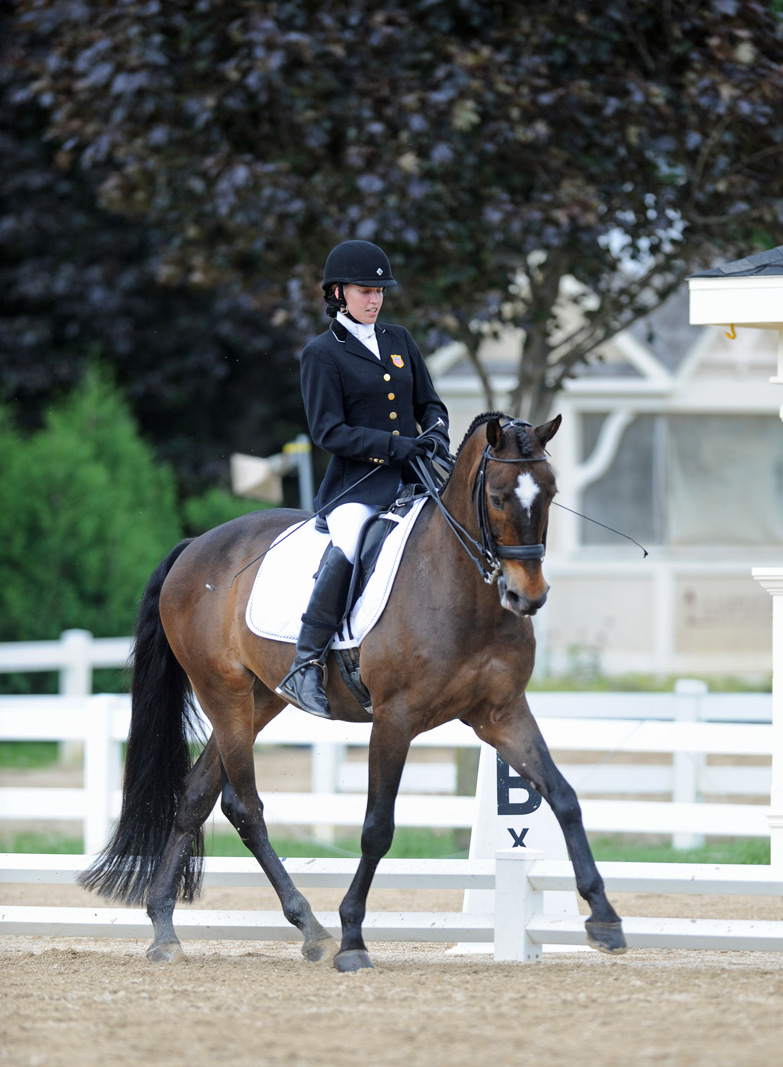When author Helen Thompson wrote, “In riding a horse, we borrow freedom,” she was probably referring to the way horses allow us to experience things we could never accomplish on our own two feet. I like to think that Ms. Thompson’s sentiment is doubly true when it comes to para-equestrian.
It’s hard to talk about the history of para-equestrian competition without first discussing the history of therapeutic riding in general. Although Greek and Roman writing mentioned the benefits of the relationship between horses and people, Lis Hartel, who rode to two Olympic silver medals after polio left her unable to walk without the aid of crutches, is widely regarded as the founder of modern day therapeutic riding.
She created Europe’s first therapeutic riding center, which soon came to the attention of the medical community. By the 1960s, riding was accepted by the American Medical Association as an “invaluable therapeutic tool.” There is a difference, however between therapeutic riding and hippotherapy.
Therapeutic Riding – teaches riding skills to people with disabilities. The focus is more on riding skills and setting riding goals.
Hippotherapy – uses the horses as a way to deliver physical, occupational, and/or speech therapy. The focus is on setting therapy goals. Hippotherapy is performed by licensed physical therapists and has very specific tasks and goals.
The North American Riding for the Handicapped Association was founded in 1969 to “promote safe and effective therapeutic horseback riding throughout the United States and Canada.” Over the years, NARHA has grown by leaps and bounds. The organization now boasts 3,500 certified instructors and 800 member centers around the world which help more than 42,000 people every year.
Not only does NARHA promote riding as a form of therapy, but the organization has also worked to develop “equine-assisted activities and therapies,” which includes carriage driving, vaulting, equine-facilitated learning, mental health, ground work, stable management and Horses For Heroes, a program designed to help war veterans and military personnel.
As more and more people participated in therapeutic riding, organizers of such programs began to see a need for further goals for riders. Many of the riders who were not able-bodied off the horse found themselves on equal footing when riding. Although many people move up to para-equestrian competition today from therapeutic riding programs, the two are not synonymous. Para-equestrian is competition for riders with disabilities.
ADVERTISEMENT
Dressage competitions began in the 1970s in Scandinavia and Great Britain. In 1984, para-equestrian was included in the Paralympics for the first time in New York. In 1987, the first World Championships for para-dressage were held in Sweden. Para-equestrian reappeared at the Paralympics in 1996 in Atlanta, Ga. Riders from 16 different countries competed in the Atlanta Games, and by 2008 70 athletes from 30 countries competed.
The International Paralympic Committee recognized para-equestrian in 1991. The International Paralympic Equestrian Committee oversaw the competitions and helped develop the sport worldwide until 2006, when the Fédération Equestre International took over. Para-equestrian became the eighth FEI discipline, and made the FEI the first international federation to oversee a sport for both able-bodied and disabled athletes.
The Alltech FEI World Equestrian Games are the first WEG to include para-equestrian. Ten representatives from the United States, four team riders and six individuals, will compete for medals. The competition is split into grades, which included Ia, Ib, II, III and IV.
Grades 101
Ia/Ib – USDF Intro Level (Ia is walk only.)
II – USEF Training Level
III – USEF First Level
IV – USEF Third Level
ADVERTISEMENT
Classifying a rider for para-equestrian competition is performed by a qualified physiotherapist or physician. During the classification, a rider’s muscle power, joint range, coordination and/or vision (in visual impairment cases) are tested to determine an appropriate grade. Riders are observed at events to ensure that their grade is correct.
Riders with disabilities like multiple sclerosis, which improves and deteriorates, are tested every six months. Grade 1a represents the most impaired, while Grade IV represents the least impaired.
“Classification is a statement of fact, not a test, and the judgement of the rider’s ability on the horse is the function of the competition, not the classification. The purpose of the competition is to reward skill; classification must therefore not penalize those who have achieved a high skill level,” explains the statement on the FEI website.
The team competition must include one Ia, Ib or II rider and cannot include more than three riders in any one grade. The best three scores from the competitors are combined for a total score. In the individual championship, riders compete in a championship and a freestyle class for each grade.
There are also carriage driving and show jumping competitions for disabled riders, and IPEC hopes to add show jumping to the Paralympics eventually.
France has been the frontrunner in para-equestrian show jumping for the past several years. The most important French para-equestrian show jumping competition is the national championship held at the FEI World Cup-qualifier in Bordeaux. The British Show Jumping Association is beginning to organize classes in Great Britain as well.
The para-dressage competition at the WEG takes place Tuesday, Oct. 5 through Saturday, Oct. 9.
One of web writer Coree Reuter’s favorite parts of working at The Chronicle of the Horse is adventuring up into the attic. While it’s occasionally a journey that requires a head lamp, GPS unit and dust mask, nearly 75 years of the equine industry is documented in the old issues and photographs that live above the offices, and Coree is determined to unearth the great stories of the past. Inspired by the saying: “History was written on the back of a horse,” she hopes to demystify the legends, find new ones and honor the horses who have changed the scope of everyday life with this blog.
Curious about anything in particular? Have a question or an interesting topic? Please e-mail Coree, she’d love to hear from you!















